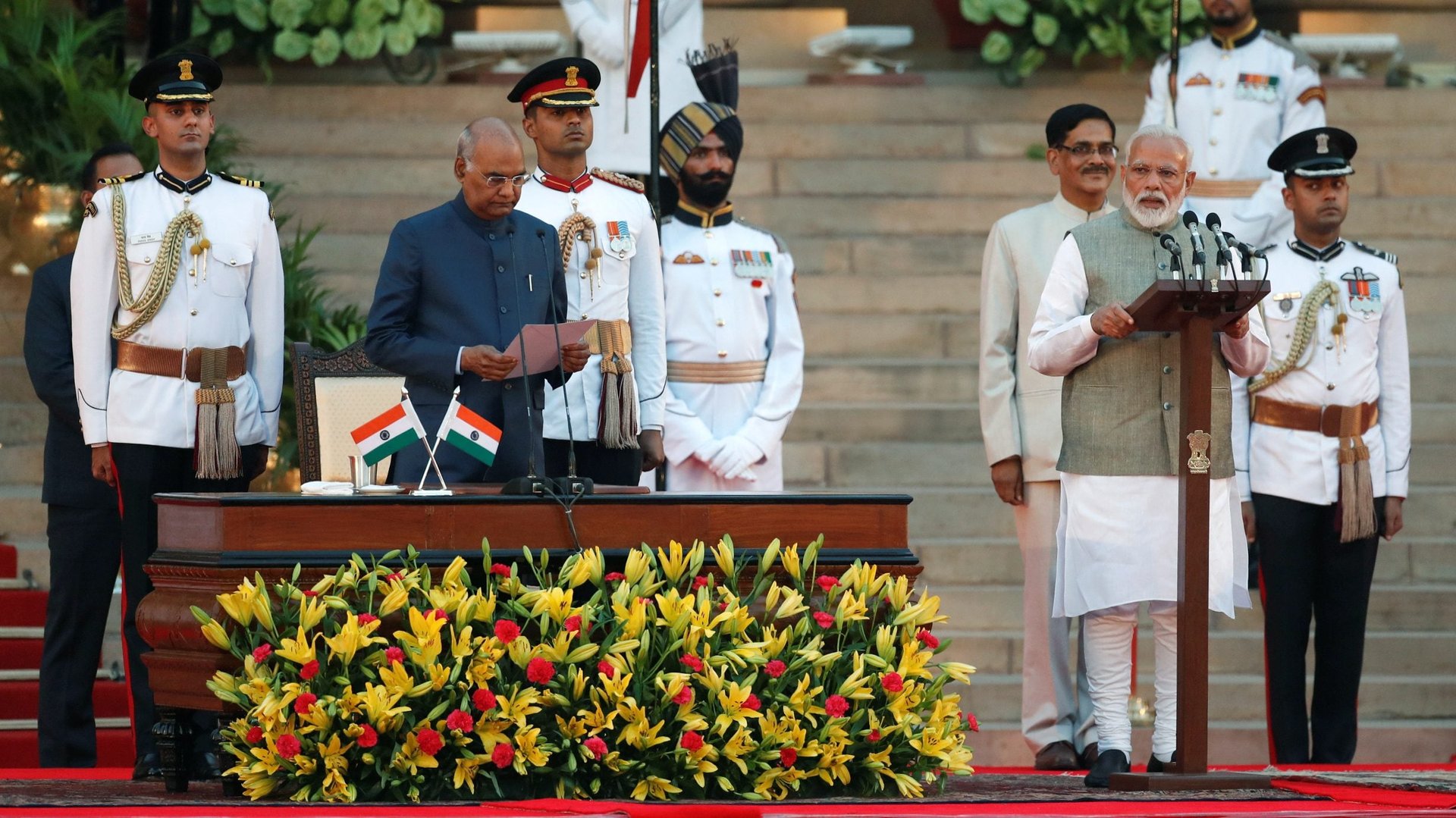Narendra Modi begins his second term as India’s prime minister
Narendra Modi today (May 30) took oath as India’s prime minister in a spectacular ceremony, kicking off his second straight term following a massive win in the national elections held in April-May.


Narendra Modi today (May 30) took oath as India’s prime minister in a spectacular ceremony, kicking off his second straight term following a massive win in the national elections held in April-May.
President Ramnath Kovind administered the oath of office and secrecy to him at the Rashtrapati Bhavan, the presidential mansion, in New Delhi. Modi, 68, was dressed in his trademark white pyjama kurta and a grey Modi jacket. The event, which began at around 7pm under sultry weather, was attended by over 8,000 guests, with around 10,000 security personnel specially deployed in and around the venue.
Like in 2014 when Modi took the oath for his first term, the ceremony was held in the spacious forecourt of the Rashtrapati Bhavan—a break from the tradition of his predecessors, most of whom took their oath indoors. The sprawling venue was spruced up further to showcase the event as a grand one, complete with red carpets, flower decks, and illumination.
Modi’s chosen council of 58 ministers, who collectively will form India’s new government, also took their oaths. However, their administrative portfolios have not been disclosed yet. The previous Modi government had 66 ministers.
Among major overall changes to the council are the addition of Amit Shah, president of Modi’s Bharatiya Janata Party (BJP), who had not been a part of the government so far. A key absence was that of Arun Jaitley, Modi’s finance minister in his previous term, who had declined any position this time. Former foreign minister Sushma Swaraj is also absent from the list. Though she did not contest the election this year, citing personal reasons, she could still have been made a minister. Modi, Shah, and Irani were met with the loudest applause from the audience during their swearing-in.
The ceremony was attended by a host of dignitaries, both Indian and foreign.
Prominent leaders of the Indian National Congress, the main opposition party, including former prime minister Manmohan Singh, party president Rahul Gandhi, and his mother, former chief Sonia Gandhi, were seated in the the front row. However, state chief ministers such as Mamata Banerjee (West Bengal), Naveen Patnaik (Odisha), and Amarinder Singh (Punjab) missed the event.
Among the attendees were also a few family members of the 40 paramilitary personnel who were killed in the Pulwama attack in Jammu & Kashmir state weeks before the election. The attack by Pakistan-based Jaish-e-Mohammed terror group fuelled anger and a nationalist undercurrent across the country that gave Modi’s campaign a considerable push.
Sri Lankan president Maithripala Sirisena and Nepal’s prime minister KP Sharma Oli were among the foreign guests. Leaders from the other member countries of the regional bloc Bay of Bengal Initiative for Multi-Sectoral Technical and Economic Cooperation—Bangladesh, Myanmar, Thailand, and Bhutan—were also invited in what is being viewed as a fresh diplomatic outreach by Modi to his neighbours.
Modi’s oath-taking ceremony in 2014 was also attended by then Pakistan prime minister, Nawaz Sharif. This time, though, Pakistan’s current prime minister Imran Khan was not sent an invite.